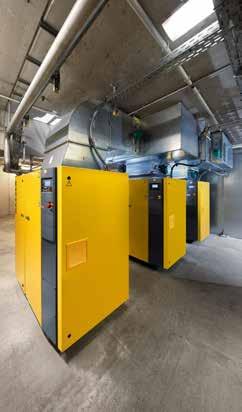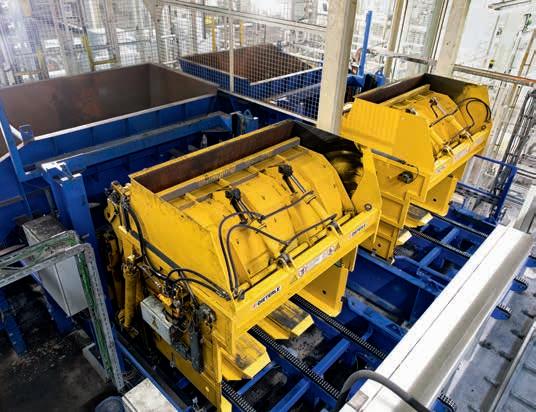
4 minute read
Compressed air takes centre stage in an energy savings plan
Austrian metal finishing expert Huber, located in the Tyrol, is an industrial service provider specialising in zinc and zinc-nickel alloy coatings. Established in the 1960s, the company has made itself future-fit thanks to a variety of optimisation measures, with a new compressed air station playing an important role in its comprehensive energy savings plan.
The headquarters of this metal industry supplier are located in the municipality of Schwoich, which encompasses 3,000 inhabitants in the Austrian state of Tyrol, 5 km south of Kufstein. Now a family-run industrial operation headed by two Managing Directors, Gerold Huber and Stephan Zellner, the company was originally founded in 1965 by Bernhard Huber as an electroplating workshop and has since grown from a simple trades operation into an industrial service provider catering to customers in Austria, Germany, Italy and Czechia.
Coating of industrially produced series components is achieved by means of fully automated, computer-controlled systems, which across all areas rely on automatic compliance with the respective process parameters.
Two different procedures are used: cartridge-drum processing (a drum system developed in-house for coating extra-long connection elements) and drum processing (for coating pourable bulk materials).
Energy savings plan
The coating of surfaces is extremely energy-intensive. For this reason, the subjects of energy cost control and reduction of greenhouse gas emissions are of primary importance to the two Managing Directors. “The best kind of energy is one you don’t need,” grins Gerold Huber. Stephan Zellner adds: “For that reason, we initiated a project some time ago with the aim of realising the available energy savings potential at all levels of the business. The project was really successful – by employing a wide variety of different measures, we were able to halve our electricity costs and reduce the previous seven gas boilers to just one. And optimising the compressed air supply also played a big part in the project.”
A dependable supply of compressed air is absolutely essential for production: in addition to pneumatically controlled cylinders and valves, the diaphragm pumps that play a central role in fully automated coating processes also rely on compressed air (required pressure 5.4 to 6.8 bar, flow rate 5.53 m³/min). Their review of the old station revealed that modernisation of the compressed air supply would bring with it huge energy savings potential: “The three old compressors incurred high maintenance costs, were too large –which meant they unnecessarily consumed lots of energy – and did not feature modern controllers, so the system had to run more or less continuously,” explains Stephan Zellner. “We were looking for a compressed air systems provider that matched our philosophy and could meet our expectations in terms of engagement and results. We were very satisfied with the support we received from the KAESER team in Linz.”
To achieve the most energy-efficient design for the machines that would be installed, KAESER’s system engineers wanted to know details such as the length of the compressed air line and the size of the air receiver. Bearing in mind that every 1-bar reduction in system pressure results in an energy saving of 6 percent, particular attention was paid to determining the ideal pressure level needed to dependably cover the requirements of production whilst remaining low enough to optimise energy consumption. To this end, numerous design concepts were considered and the corresponding simulations run.

The end result was a new compressed air station comprising three type ASD 60 rotary screw compressors, two energy-saving SECOTEC TE 122 refrigeration dryers, a SIGMA AIR MANAGER 4.0 master controller, an AQUAMAT CF 38 oil-water separator and various compressed air filters. Moreover, the project included complete piping, power supply and exhaust/inlet air ducting. Installation was achieved with the plant remaining in operation – no downtime was necessary. The two Managing Directors were completely satisfied with the implementation and end result of the project, particularly valuing the pleasant collaboration and outstanding commitment shown by KAESER.
We felt confident that we were in good hands with KAESER. Their collaboration was motivated, engaged and target-oriented.
Dr. Stephan Zellner, Managing Director
The most important success, however, was the achievement of the project objectives as laid out in the energy savings plan – a success in which the new compressed air station played an essential part.









